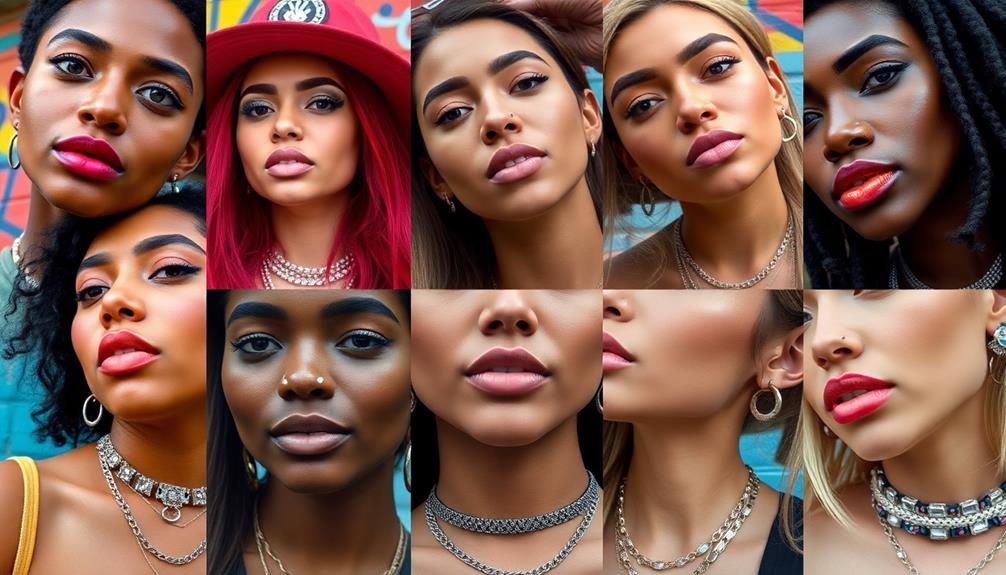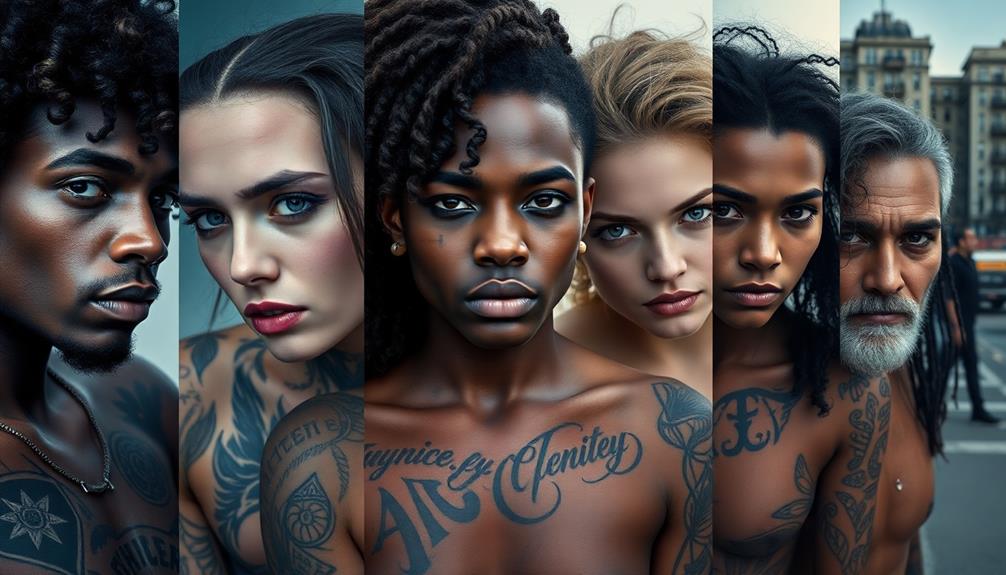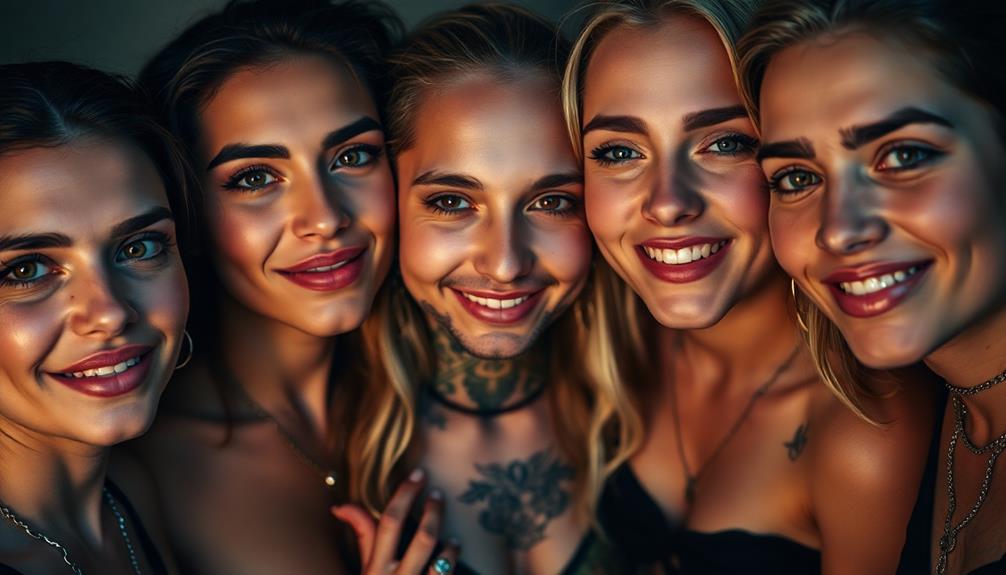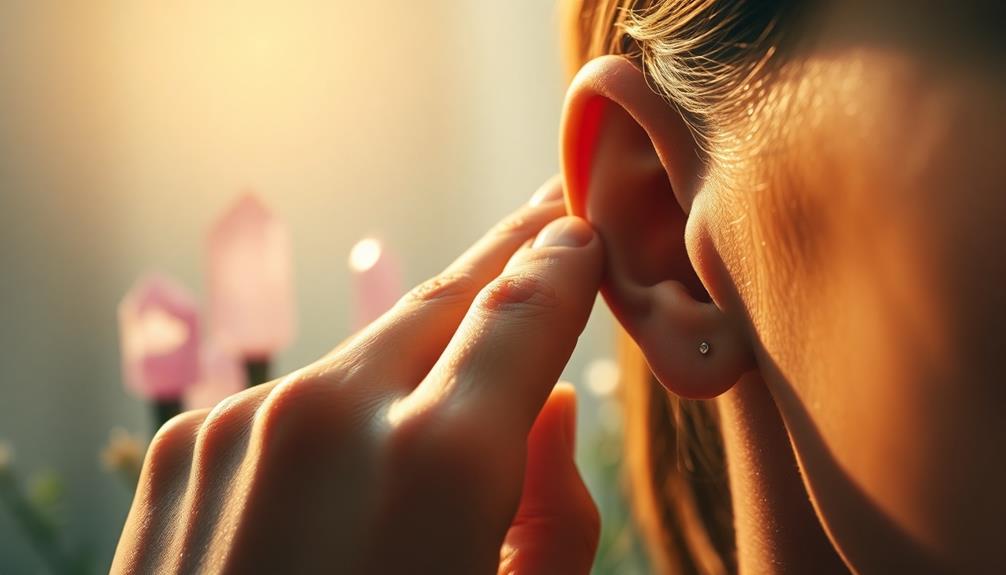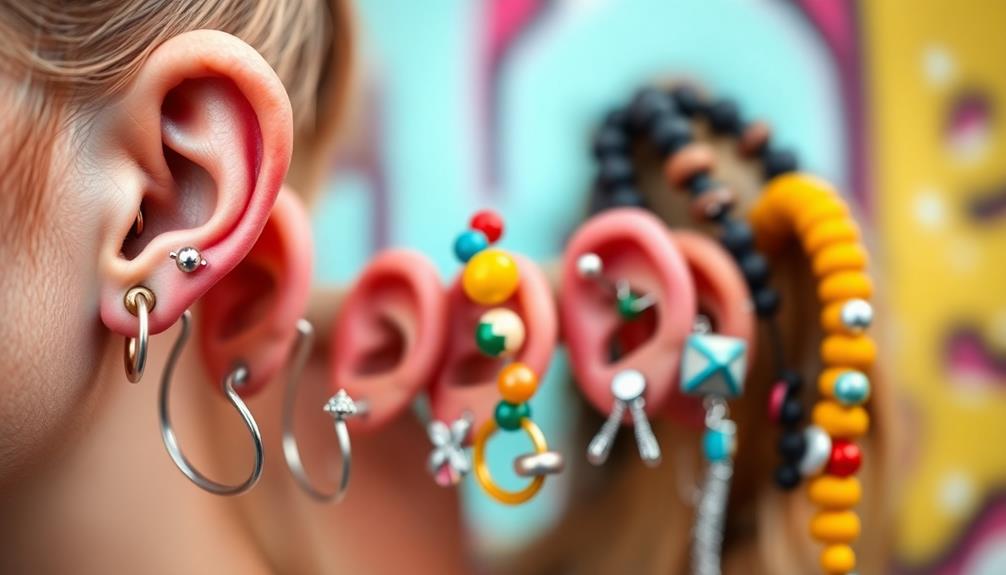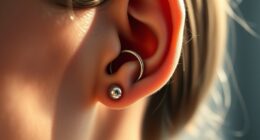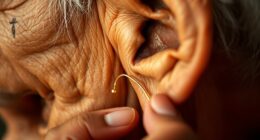Piercings are essential for expressing and shaping your gender identity. They symbolize autonomy and challenge societal norms. By choosing specific locations or LGBTQ+ themed jewelry, you can communicate pride and solidarity. Many people use piercings as a way to mark personal milestones, enhancing self-acceptance and body image. For transgender and non-binary individuals, piercings can alleviate dysphoria and provide a sense of belonging. Plus, they foster connections within the community, reinforcing shared experiences and identities. If you're curious about how piercings impact personal journeys and community dynamics, there's much more to explore.
Key Takeaways
- Piercings symbolize autonomy and challenge traditional gender norms, allowing individuals to express their unique identities.
- Specific piercings and LGBTQ+ themed jewelry communicate solidarity and enhance visibility within the community.
- For transgender and non-binary individuals, piercings can alleviate dysphoria and reinforce body acceptance.
- The act of getting pierced symbolizes control over one's body, contributing to improved self-esteem and body image.
- Shared experiences of piercings foster community bonding and inclusivity among individuals navigating their gender identities.
Piercings as Identity Symbols
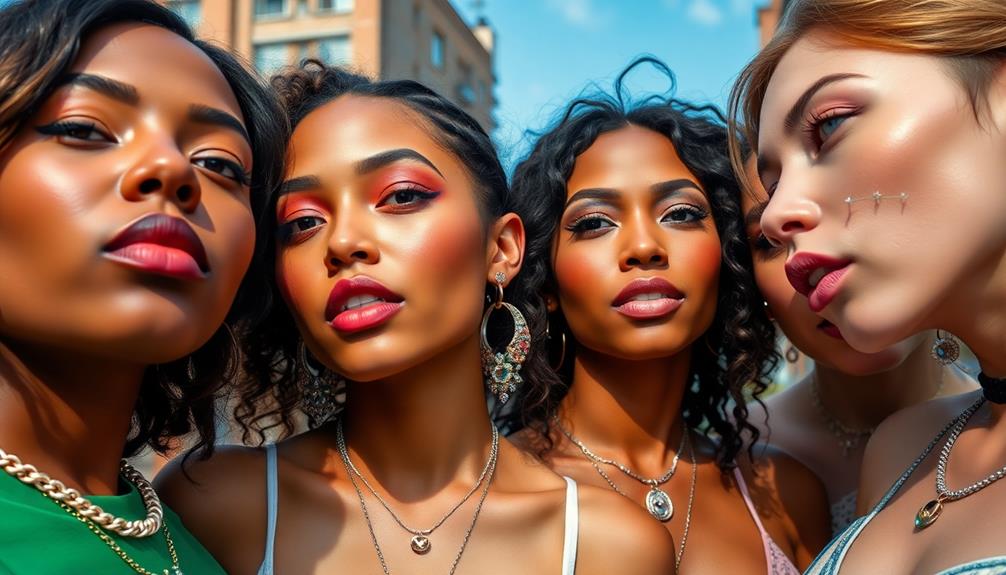
Expressing yourself through piercings can be a powerful way to assert your identity, especially within the LGBTQ+ community. Piercings serve as compelling symbols of autonomy, allowing you to challenge societal norms around gender and sexuality. By choosing specific locations for your piercings and adorning them with LGBTQ+ themed jewelry, like rainbow colors, you communicate solidarity and pride in your unique identity.
It's important to recognize that non-intimate piercings are just as valid as intimate ones. Each piercing you choose represents a form of expression that reflects your journey and challenges misconceptions about what body modification means. Often, the act of getting pierced is tied to personal milestones, marking significant transformations in your life and your understanding of gender identity.
Moreover, piercings can foster community bonding among those who share similar experiences. They help reinforce a collective identity that celebrates diversity and inclusion within the LGBTQ+ community. By wearing your piercings proudly, you not only express your individuality but also connect with others who appreciate and honor the rich tapestry of identities that make up this vibrant community.
Cultural Context and Significance
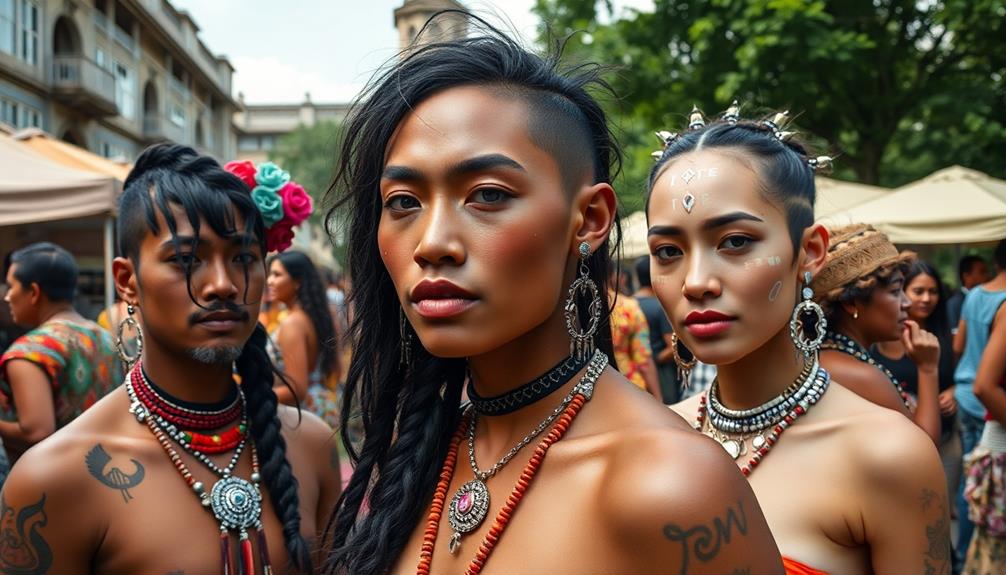
Throughout history, piercings have transcended mere body modification, solidifying their place as crucial markers of identity within queer, trans, and kink communities.
For many, piercings serve as crucial tools for self-expression and identity affirmation, pushing back against traditional societal norms. They allow individuals to reshape their identities and assert their presence in a world that often marginalizes difference.
Consider these significant aspects of piercings in cultural contexts:
- Identity Signaling: The "gay ear" phenomenon illustrates how piercings can discreetly communicate one's sexual orientation, reflecting evolving cultural codes.
- Resistance and Empowerment: Piercings have historically symbolized resistance against societal norms, allowing marginalized communities to assert their gender expression and individuality.
- Gender Affirmation: For transgender and non-binary individuals, piercings can alleviate dysphoria, enhance body acceptance, and serve as a physical manifestation of their gender identity.
As societal attitudes toward queer people shift, the integration of piercings into their culture continues to evolve, impacting visibility, acceptance, and safety in expressing one's authentic self.
Psychological Impacts of Piercings
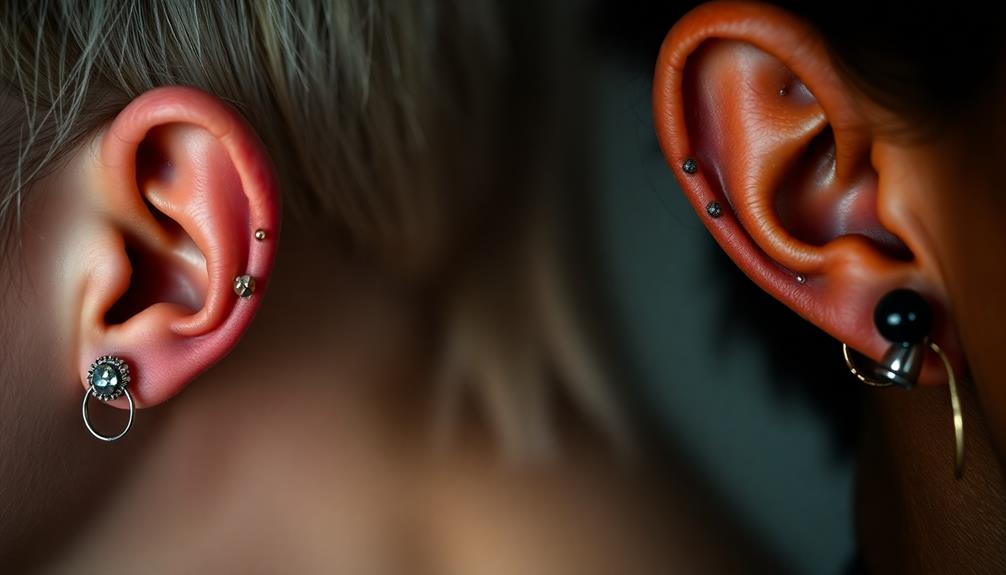
How do piercings influence your sense of self? For many, they serve as a powerful form of body modification, enhancing self-esteem and reshaping body image. Certain piercings, such as clitoral hood piercings, can enhance sexual pleasure, further contributing to a positive self-image.
When you choose to get pierced, you reclaim control over your body, allowing for a unique expression of identity. This act can symbolize a rebellion against societal norms, reinforcing your autonomy and self-identity.
Piercings can also act as a coping mechanism for emotional pain or trauma. They provide a tangible way to mark personal achievements and milestones, helping you navigate complex feelings.
The healing process associated with piercings often holds emotional significance, especially for those dealing with dysphoria. For transgender and non-binary individuals, this journey can be transformative, aiding in the exploration of gender identity and self-expression.
Personal narratives surrounding piercings frequently highlight these psychological impacts. They emphasize how the experience can lead to a deeper understanding of oneself, fostering confidence and resilience.
Ultimately, piercings are more than just adornments; they play a vital role in shaping how you perceive and express your identity in a world that often imposes limitations.
Community Bonding Through Body Modifications
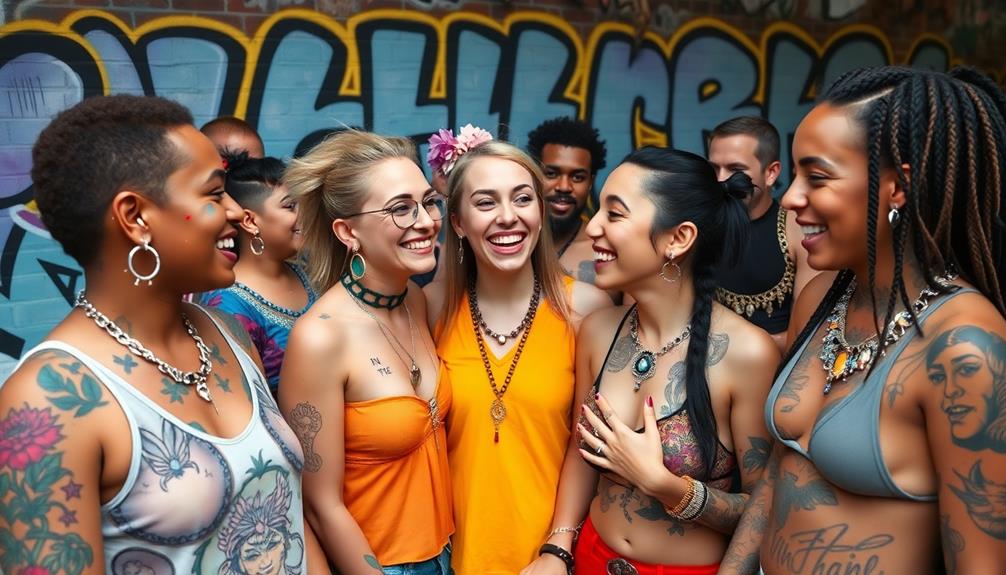
Many find that piercings create a sense of belonging within the LGBTQ+ community, serving as a shared expression of identity and solidarity.
When you engage in body modification through getting pierced, you're not just altering your appearance; you're participating in a communal ritual that fosters connections with others who value self-expression and defy societal norms.
Here are three ways piercings enhance community bonding:
- Shared Experiences: Group piercings often become memorable milestones, reinforcing friendships and creating a sense of shared identities among participants.
- Symbol of Resistance: Many see piercings as a collective stance against traditional gender presentations, promoting inclusivity and acceptance within diverse communities.
- Personal Journeys: For many in the queer community, getting pierced signifies important steps in their journeys of self-discovery, enhancing feelings of belonging and solidarity.
Gender Affirmation and Body Image
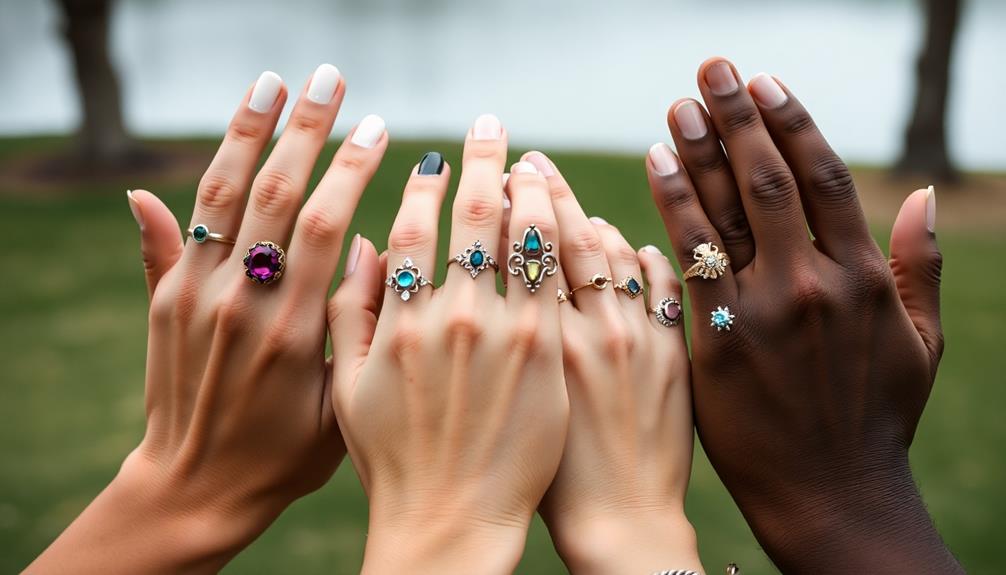
What role do piercings play in shaping your body image and affirming your gender identity? For many, piercings serve as significant forms of body modification that enhance self-acceptance and confidence.
In the transgender and non-binary communities, piercings can align your physical appearance with your gender identity, acting as a powerful tool for gender affirmation.
Consider how nipple and clitoral hood piercings can deepen your connection to your body, while Prince Albert piercings might help redefine your urinary function to match your identity.
For transgender men, large gauge labia piercings can be a tangible reminder of male anatomy, offering a non-surgical alternative for gender expression.
The emotional benefits of these modifications are profound. By choosing piercings, you reclaim your identity and improve your body image, fostering a stronger sense of self.
Plus, the accessibility and cost-effectiveness of piercings make them a viable option for those who may not pursue surgeries.
Ultimately, embracing piercings can transform your journey of gender affirmation, boosting your confidence and helping you express your true self.
Frequently Asked Questions
What Do Piercings Symbolize?
Piercings symbolize individuality and self-expression. They can represent personal milestones, defiance against norms, or a connection to communities. Each piercing tells a unique story, reflecting your journey and choices in life.
How Do Piercings Express Individuality?
Piercings express your individuality by showcasing your unique tastes and personality. Each choice, from location to jewelry style, reflects your values and experiences, allowing you to stand out and communicate who you truly are.
What Is the Psychology Behind Piercings?
The psychology behind piercings often revolves around self-empowerment and identity. You might use them to reclaim your body, express emotions, or mark milestones, finding a sense of belonging and boosting your self-esteem through personal choices.
What Is the Cultural Significance of Piercings?
Did you know that 83% of people believe piercings carry cultural significance? They often symbolize individuality, status, or tradition across various societies, reflecting personal beliefs and histories while connecting individuals to their cultural roots and communities.
Conclusion
In exploring the role of piercings in gender expression, it's clear they serve as powerful identity symbols. Some might argue that piercings are merely trends, but their cultural significance and personal meanings often run much deeper. For many, these body modifications affirm their gender identity and foster a sense of belonging within communities. By embracing piercings, individuals can challenge societal norms and express their authentic selves, showcasing the profound impact of these choices on one's identity journey.
Hi, my name is Danielle, and I’m an author for piercings-body.com. I have a passion for writing and love to share my knowledge on all things body piercing-related. I’m also a huge advocate for safe body modification practices and believe everyone should be able to make informed decisions about their bodies. When I’m not writing or blogging, I enjoy spending time with my family and friends, practicing yoga, and exploring new places.

